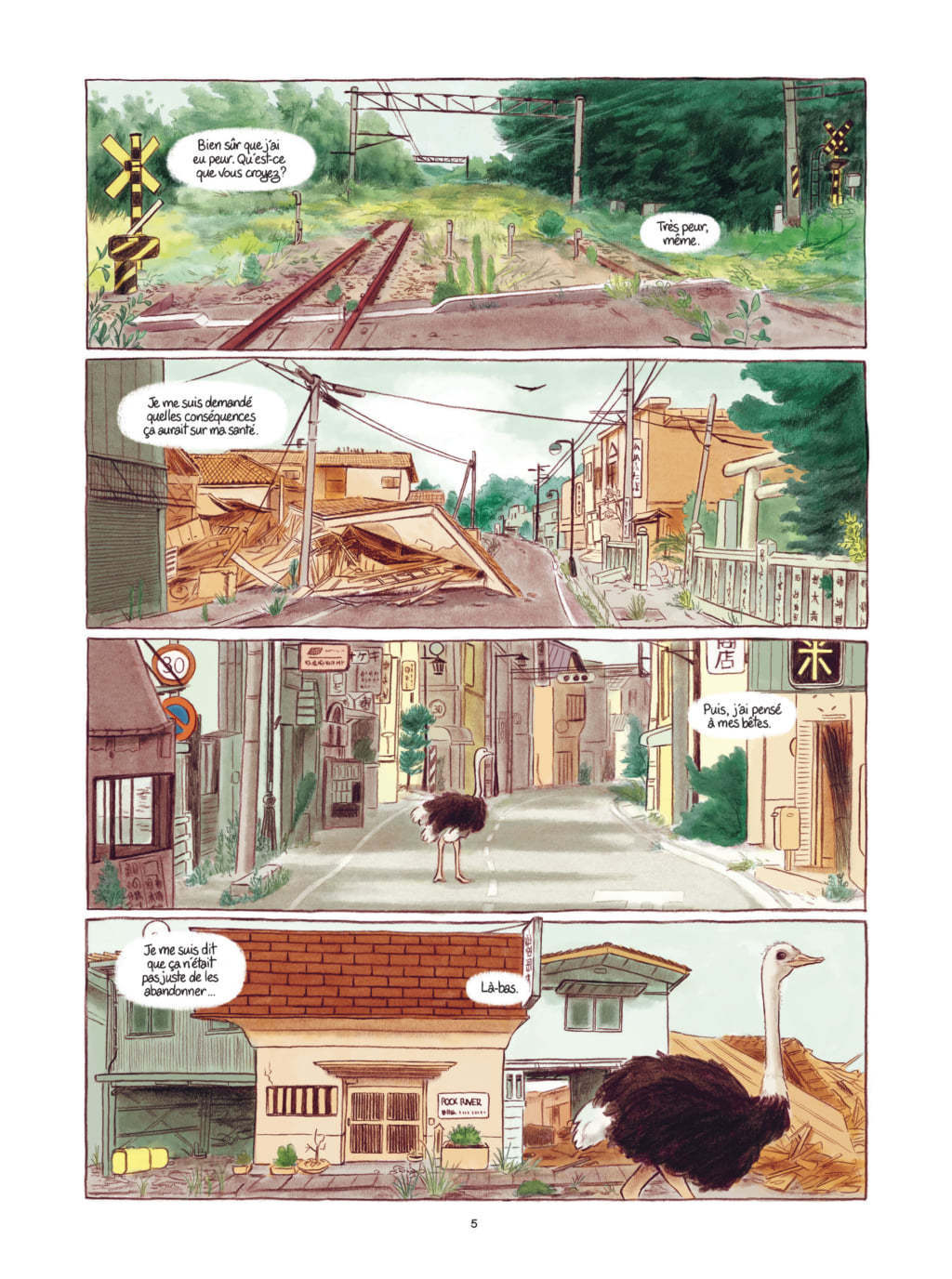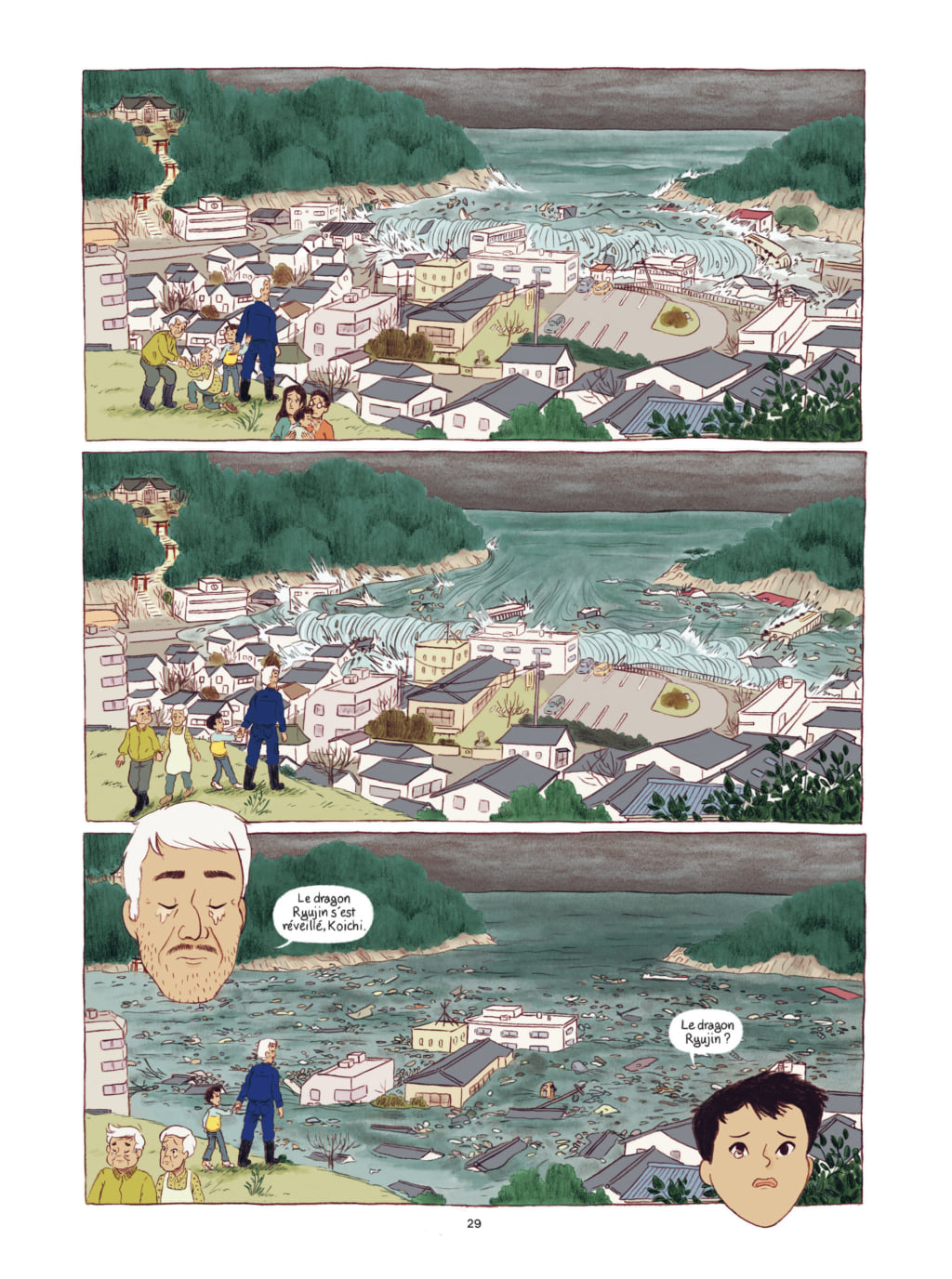‘Naoto’, Surviving in the No-Go Zone
This graphic novel by Ewen Blain and Fabien Grolleau uses words and images to tell the true story of Naoto Matsumura, a Fukushima survivor.

© Steinkis Éditions
The duo formed by Ewen Blain (illustrations) and Fabien Grolleau (storyline) tell the true story of Naoto Matsumura. This inhabitant of a village close to the Fukushima Daiichi Nuclear Power Plant decided to return to stay in his home the day after the violent earthquake that triggered a tsunami, then a nuclear disaster, while everyone else was fleeing this radioactive zone. His everyday existence is solitary, devoid of other human life but with many animals to take care of, the latter being loyal companions of this individual who would become one of the faces of anti-nuclear activism in Japan.
Naoto is Ewen Blain’s first comic book; until its release, he had primarily worked in children’s publishing and media. Fabien Grolleau, meanwhile, is no stranger to ecological and environmental themes, having examined them in his previous comic books, such as Mikaël ou le mythe de l’homme des bois (‘Mikaël or the Myth of the Man of the Woods’) and Le chantier (‘The Construction Site’).
Becoming an anti-nuclear activist
On 11 March 2011, as Naoto Matsumura was in his garden with his young nephew, the ground shook, and for much longer than usual. Some of the houses did not withstand the tremors, but Naoto Matsumura’s neighbours and relatives were unscathed. These residents of a little village perched on the Japanese coast in Fukushima Prefecture thought that they would only have to deal with the material damage. A few hours later, however, a wave of over ten metres in height swept the village away right in front of their eyes, before explosions rang out from the nearby nuclear power plant, giving way to fear as the residents evacuated. They were forced to leave everything behind and try to get to family members in an unaffected area, before being rejected due to the fear of radiation and ending up in an evacuation centre.
While everyone else was taking shelter, Naoto Matsumura turned back and returned to his home, determined to rescue the animals, now the only living beings occupying this area of land where humans were only supposed to set foot wearing a protective suit and gas mask and armed with a Geiger counter. The reader receives a glimpse into Naoto Matsumura’s everyday life and his political decision that would become his new battle: to send a message to the world that it is vital to stop using this energy source. This powerful tale is carried by the subtle poetry of Ewen Blain’s illustrations that show man and animals living in harmony, but that also summon heroes and ghosts from Japanese stories and legends.
Fukushima is a topic regularly examined by artists, for example by Koya Kamura in his short film Homesick that was selected at the 2020 César Awards.
Naoto (2021) by Ewen Blain and Fabien Grolleau is a graphic novel published by Steinkis (currently unavailable in English).

© Steinkis Éditions

© Steinkis Éditions
TRENDING
-
A House from the Taisho Era Reveals Its Secrets
While visiting an abandoned building, Hamish Campbell discovered photographs the owner had taken of the place in the 1920s.

-
The Taboo-Breaking Erotica of Toshio Saeki
The master of the 1970s Japanese avant-garde reimagined his most iconic artworks for a limited box set with silkscreen artist Fumie Taniyama.

-
With Meisa Fujishiro, Tokyo's Nudes Stand Tall
In the series 'Sketches of Tokyo', the photographer revisits the genre by bringing it face to face with the capital's architecture.

-
Masahisa Fukase's Family Portraits
In his series ‘Family’, the photographer compiles surprising photos in which he questions death, the inescapable.

-
Hajime Sorayama's Futuristic Eroticism
The illustrator is the pioneer for a form of hyperrealism that combines sensuality and technology and depicts sexualised robots.





